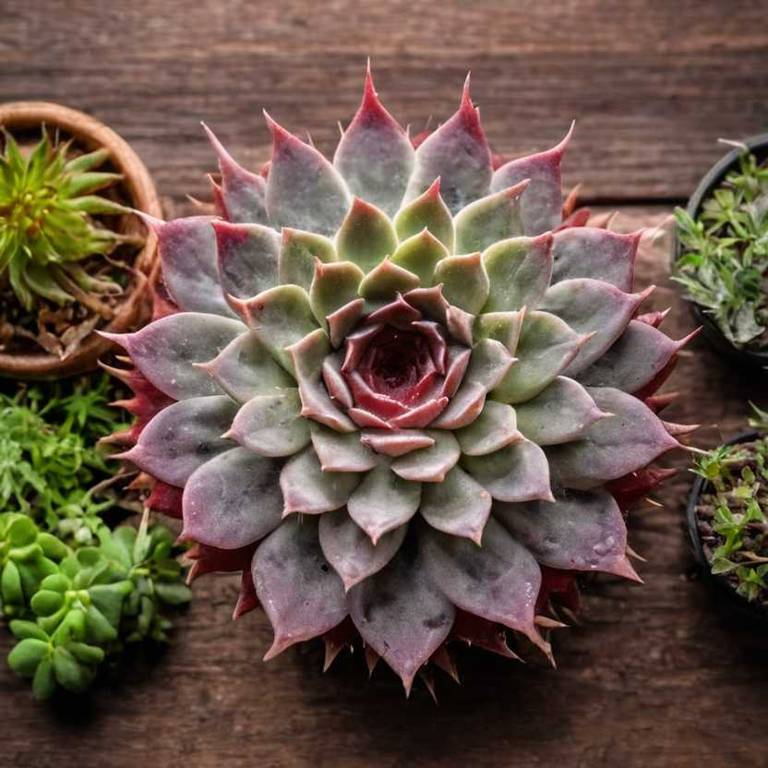Sempervivum Tectorum: What To Know Before Using It For Medicinal Purposes

Sempervivum tectorum, commonly known as houseleek or sacred moss, has been traditionally used for its purported medicinal properties.
Historically, it has been employed to treat wounds, skin conditions, and as a detoxifying agent due to its high content of mucilage and antioxidants. The plant contains compounds such as saponins and flavonoids, which may contribute to its anti-inflammatory and antimicrobial effects. In some cultures, it has been used to support kidney health and as a remedy for respiratory ailments.
However, modern scientific research on its medicinal efficacy is limited, and its use should be approached with caution and consultation with a healthcare professional.
Health Benefits
Sempervivum tectorum has several health benefits, such as its potential to support respiratory health due to its anti-inflammatory properties.
The plant contains compounds that may help reduce inflammation in the airways, making it beneficial for individuals with conditions like asthma or chronic bronchitis. Additionally, Sempervivum tectorum is rich in antioxidants, which can help neutralize free radicals and protect cells from oxidative stress. It is also believed to have diuretic properties that may aid in detoxification and support kidney function.
Overall, this plant offers a range of natural health benefits that can contribute to overall well-being when used appropriately.
10 Best Health Beneift of Sempervivum tectorum
Bioactive Constituents
Sempervivum tectorum has several bioactive constituents, such as saponins, flavonoids, and polyphenols, which contribute to its medicinal properties.
These compounds exhibit antioxidant and anti-inflammatory activities, making the plant beneficial for skin health and wound healing. Studies suggest that the presence of these bioactive compounds may also support cardiovascular health by reducing oxidative stress. Additionally, Sempervivum tectorum contains volatile oils and tannins that enhance its therapeutic potential in traditional medicine.
The combination of these constituents makes Sempervivum tectorum a promising candidate for further research in natural medicine.
Medicinal Preparations
Sempervivum tectorum has several medicinal preparations, such as teas, tinctures, and topical salves, which have been traditionally used for their purported health benefits.
The leaves of the plant are often dried and brewed into herbal teas believed to support respiratory health and reduce inflammation. Tinctures made from the plant are thought to aid in detoxification and may help alleviate symptoms of colds and flu. Topical applications of Sempervivum tectorum preparations are sometimes used to soothe skin irritations and promote wound healing.
However, due to limited scientific research, it is important to consult a healthcare professional before using these preparations for medicinal purposes.
Side Effects
Sempervivum tectorum can have some side effects, such as skin irritation or allergic reactions when handled or ingested.
Ingesting the plant may cause gastrointestinal discomfort, including nausea, vomiting, or diarrhea, especially in children or pets. While generally considered safe for ornamental use, the plant contains compounds that might interact with certain medications or exacerbate existing health conditions. Long-term exposure to the plant's sap may lead to chronic skin conditions in sensitive individuals.
It is advisable to consult a healthcare professional before using any part of Sempervivum tectorum for medicinal purposes.